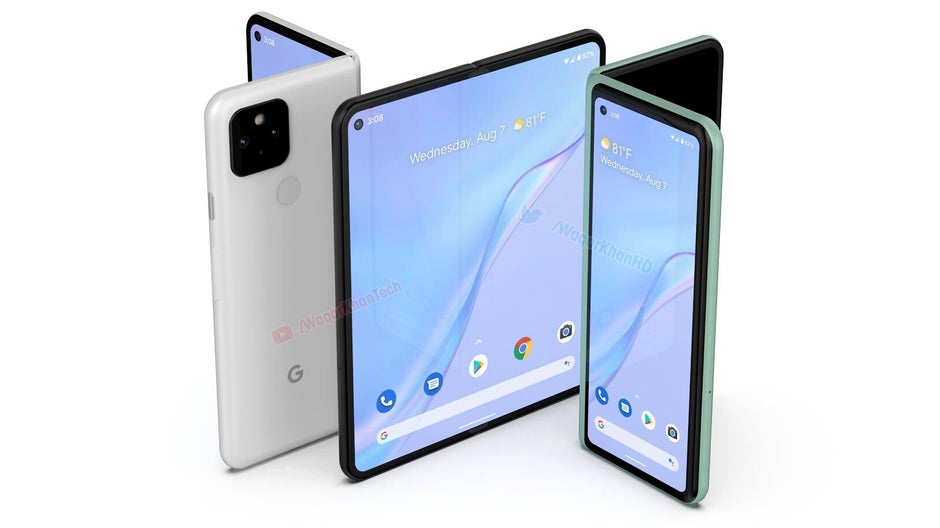Google has managed to make its Pixel line-up well known in the smartphone world, even if Google as a company is nowhere near
.
But in order to get where it is now, Google, as a smartphone company, has made some questionable decisions, namely the decision to copy trends from the bigger phone brands, rather than developing its own identity.
Let’s take a look at some examples of Google acting as a follower, and envision the company as a potential future leader in the smartphone industry.
Back then most phones still had (roughly) symmetrical top and bottom bezels, so the iPhone X’s then-unique design stood out, and was even a subject of ridicule from competing brands.
Lo and behold, soon after, in 2018 Google released a phone with perhaps the most hideous, biggest notch the world has ever seen on a smartphone – the Google Pixel 3 XL.
Prior to its official announcement, I honestly thought Google was “leaking” a late April Fools’ joke and this wasn’t going to be a real phone, but as it turned out – it was.
The design of the Google Pixel 3 XL was among the first smartphones from a known brand to copy the iPhone X notch, and as you would normally see from Chinese clones, that copy work was less than ideal. The notch was much longer and much more intrusive than what the iPhone had. What an odd choice, Google.
Then Google copied the iPhone’s camera bump
In 2019, starting with the Pixel 4, Google changed its main camera module design to resemble the then-new iPhone 11 square camera module.
And the same square camera module with rounded corners it was, with the same number of cameras (2) inside, along with a flash. But, to Google’s credit, it made the module pitch black and rotated its contents by 90 degrees, so at least that was slightly different.
At the time Samsung was rocking pill-shaped camera modules, and so were OnePlus, Xiaomi, and many others – this was the Android trend. But Google wasn’t paying attention to that, nor was it trying to break any new grounds, continuing to pay attention to Apple’s trends instead.
How long would it take until Google was secure enough to do it’s own thing? As it turned out, not too much longer, but before that, rumors started floating of a foldable Pixel phone…
The Google Pixel Fold was shaping up to be a lesser Samsung Galaxy Z Fold 3
Recently news broke that Google may have canceled its Pixel Fold. That was to be a foldable smartphone, which based on Google’s patents was shaping up to look a lot like Samsung’s Galaxy Z Fold 3, except with less features.
Allegedly, Google doesn’t think that its Pixel Fold was going to be competitive enough to go against Samsung’s foldable, although we could argue that the folding phone market could’ve used the extra competition. At the very least, it could have driven the folding phone prices down a bit.
But from a business standpoint, Google is arguably smart to choose not to spend any more money on a product that is unlikely to sell or compete well against Samsung’s offering.
While Samsung’s Galaxy Z Fold 3 is a highly polished foldable phablet, following several generations of improvements, and it packs plenty of great features like Samsung DeX (a desktop interface) and S Pen stylus support with its own set of gestures and apps, Google’s Pixel Fold was likely not going to offer anything like that.
It’s reasonable to suspect that it was just going to be a lesser Samsung Galaxy Z Fold 3 clone with nothing special about it to make it preferable. But can we fault Google for something it didn’t even release? Well, the Pixel Fold is actually not concretely cancelled just yet.
Google might still release a folding device in 2022 instead of letting all of its research and development until now go to waste, and we’ll see then if we get a lesser Z Fold 3 clone or something as uniquely Google as, say, the Surface Duo 2 is to Microsoft.
The Pixel 6 series is the right step forward for Google
With the newly-released Pixel 6 and Pixel 6 Pro Google definitely made an effort to finally stand out with its own unique smartphone design, rather than copying Apple or Samsung.
The Pixel 6 series has a signature edge-to-edge camera bump and dual-tone back cover, so not even grandma can confuse it for an iPhone anymore. It’s a beautiful, bold new design for the company. We’ll stay optimistic and consider it a sign that Google is now ready to pave its own way in the highly competitive smartphone world.



